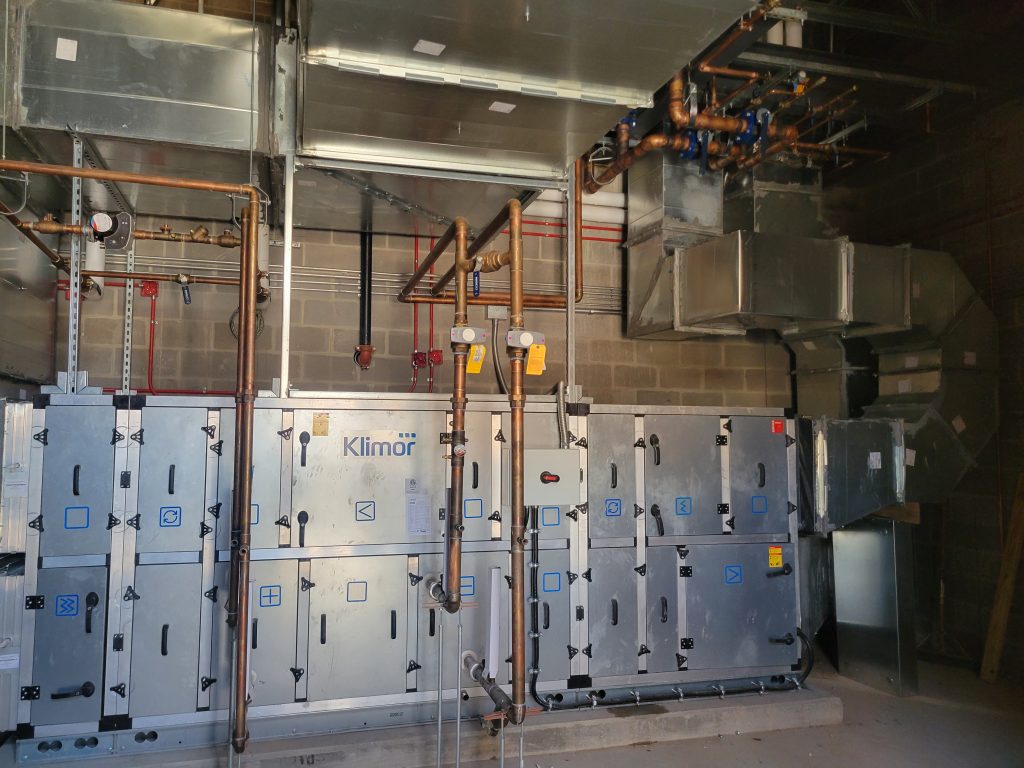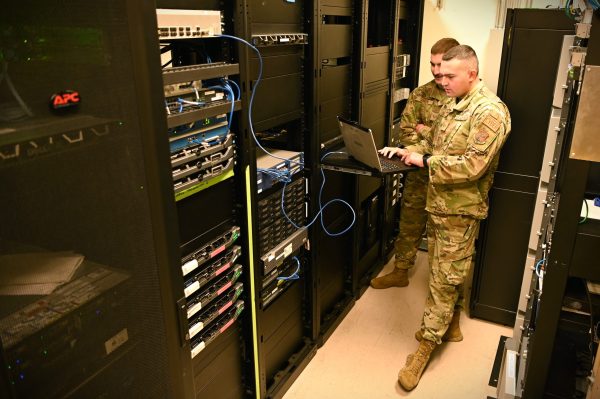By Pat Hogan and Malkia Morton, M.SAME
In fast-tracking a design-build renovation of three barracks at Fort Liberty (to promptly address a mold infestation), utilizing modified early contractor involvement allowed the project to be successfully completed within a year.
In August 2022, at Fort Liberty, N.C. (formerly Fort Bragg), mold infestations were discovered in Smoke Hill Barracks, which houses 1,200 soldiers. To urgently address this concern, ensure the health and well-being of servicemembers, and uphold acceptable living conditions, the base turned to a Rapid Disaster Infrastructure Contract, executed through the Omaha District of the U.S. Army Corps of Engineers. This decision marked the beginning of an ambitious initiative supported by Conti Federal that aimed at fast-tracking the incidental design-build renovation of three barracks within a year.
Following successful completion, the project has effectively underscored the value and significance of a modified early contractor involvement approach to achieving mission success.
The project exemplifies the power of partnering to drive enhanced collaboration between military authorities and infrastructure experts. Because even when faced with unexpected challenges, innovative solutions can be devised and executed on time and on budget.
Set Up For Speed
Operating under the Rapid Disaster Infrastructure Contract, the urgency of addressing the mold crisis at Fort Liberty demanded swift mobilization. With the support also of Omaha District and Savannah District, the project team orchestrated a rapid and streamlined mobilization process that was completed in under three weeks. This ambitious effort involved assembling a diverse cohort of experts and resources that ranged from project managers to skilled tradespeople and sub-contractors. By expediting this crucial phase, the base was able to ensure the safety and well-being of soldiers remained paramount throughout the entire operation. In total, the renovation involved 27 unique subcontractors and a typical daily workforce of 150 to 200 personnel. To sustain rapid speed, instituting a unified and integrated approach was critical. An Integrated Project Delivery Team was established to function as the nucleus of collaboration, fostering transparent communication and aligning objectives to maintain mission congruence.
Alignment was crucial not only for efficient decision-making but also for leveraging collective expertise and insights to navigate challenges as they emerged. Through cohesive teamwork and shared insights, the Integrated Project Delivery Team maximized efficiency at every stage of execution. Considering the high-profile nature of the project, the team developed innovative reporting tools and processes to enable real-time project performance and budget fidelity status feedback to all key stakeholders through execution. Enhancing this approach was the implementation of Warrior Lean, a unique proprietary construction management system to Conti Federal that combines lean construction principles with the decision-making prowess of the military.
When unforeseen circumstances emerged, the principles of Warrior Lean guided the project toward its objectives—employing a proactive, combat-oriented mindset to swiftly address decision-making requirements and ensure team alignment. The core elements of Warrior Lean (encompassing communication, collaboration, and congruence) played a pivotal role in fostering robust leadership and technology solutions to ensure comprehensive situational awareness.

PHOTO BY KEVIN TAYLOR
Moving To Construction
With both approaches in place, the project began with a thorough assessment of the affected barracks. The assessment included evaluating the extent of the mold contamination, identifying structural vulnerabilities, and ensuring that the renovation would comply with the updated barracks and installation safety standards. The design phase that followed aimed to strike a balance between rapid execution and a high-quality renovation. This would ensure that after completion, the soldiers would be provided with a safe and comfortable living environment.
This minimalist “incidental design” aimed to rapidly advance construction startup by focusing on essential elements. Frequent over-the-shoulder reviews with stakeholders facilitated rapid progression and assured that designs aligned with functional requirements. By focusing energy on crucial design aspects, the project reduced unnecessary complexities and enabled construction to commence promptly without compromising quality.
Leveraging Mockups
Among the challenges of executing an incidental design-build renovation project was the need to develop the required production methodology and sequencing to maintain the required construction velocity that would meet the mission schedule.
Room mockups were built to enhance pull planning, identify potential conflicts, and assisted in the devising strategies to optimize productivity. Additionally, by simulating construction scenarios, project teams could visualize potential pitfalls and devise preemptive solutions. This approach not only expedited decision-making, but it also empowered teams to fine-tune their strategies and produce optimal results.
Given the one-year timeline to complete the work, adhering to conventional procurement and contracting timelines would have posed a significant potential risk to successful completion. Recognizing this challenge, immediately after receiving notice to proceed, the project team adopted an innovative strategy that involved enlisting trade subcontractors under a capped time and materials contract arrangement so they could participate in critical facility assessment and scope development activities. This proactive approach effectively accelerated scope development. Design completion was achieved within a significantly compressed timeframe. As a result of the modified early contractor involvement, design rapidly advanced to 35 percent completion and trade scopes were seamlessly transitioned into fixed-price contracts. This delivered transparency and cost assurance—significantly reducing overall cost and performance risk.
Power Of Partnering
The mold infestation crisis at Fort Liberty highlighted the importance of swift and effective responses to unforeseen challenges within military infrastructure. Thanks to the collaborative management under the Rapid Disaster Infrastructure contract, renovation of the three barracks was successfully executed within one year.
The project exemplifies the power of partnering to drive enhanced collaboration between military authorities and infrastructure experts. Because even when faced with unexpected challenges, innovative solutions can be devised and executed on time and on budget. The commitment to the mission and soldier safety and well-being remains an unwavering testament to the dedication of all involved in ensuring that Fort Liberty continues to uphold its reputation as a vital pillar of national defense.
Beyond mold remediation, this endeavor also serves as a model for rapid infrastructure response in dynamic environments. And the application of modified early contractor involvement principles presents a framework that can be harnessed to tackle future challenges. As installations evolve, embracing the themes of modified early contractor involvement—mobilization, collaboration, design efficiency, procurement innovation, and productivity enhancement—will undoubtedly pave the way for a more secure and resilient future for those who safeguard our nation.
Pat Hogan is Vice President, Conti Federal
Malkia Morton, M.SAME, is Marketing & Communications Specialist, Conti Federal.
They can be reached at phogan@contifederal.com; and mmorton@contifederal.com.
More News from TME
-
July 2024 Event – MG (Retired) Mike Milano
Please Join the Society of American Military Engineers Denver Metro Post for a Talk on Leadership Intended for Professionals in the Architecture, Engineering, Construction and Science Industry and Military/Federal Employees. Come see MG (Retired) Mike Milano talk about leadership and present his book “Large and in Charge No More – A Journey to Vulnerable Leadership” […] -
June 2024 Event – GBSD/Sentinel Program Industry Day
The WY National guard is hosting the GBSD Industry Day -

Developing an Engineering Standard of Care for Cyber Safety
There is growing urgency to secure the nation’s critical infrastructure from a cyberattack, which will require improvements in both federal policies and day-to-day operations to strengthen response and recovery from incidents.